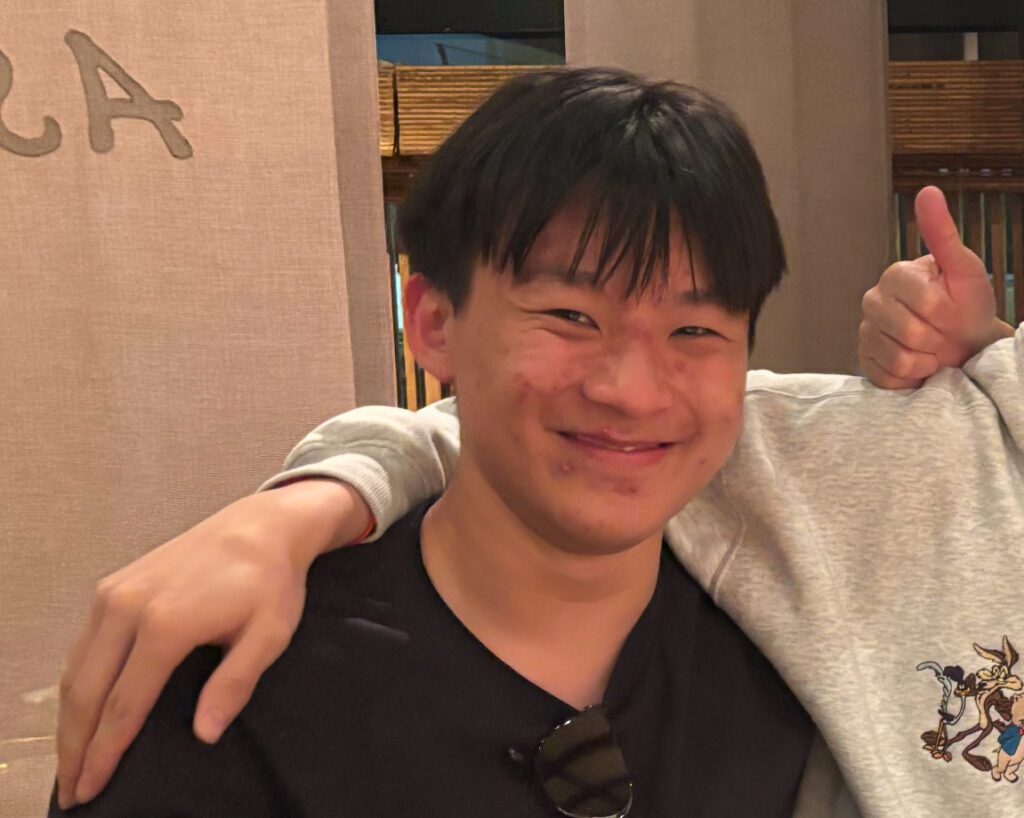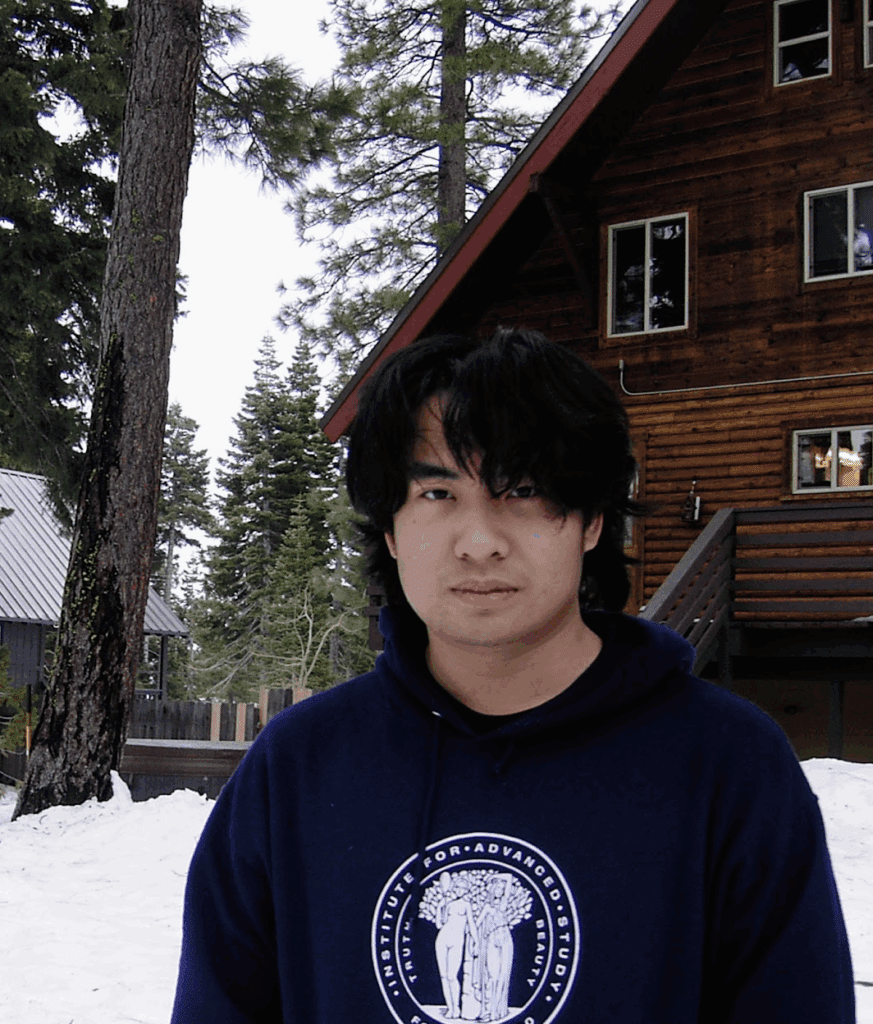Natasha Bawankule

Located on the southeast corner of the Island of Hawai’i, Kīlauea is one of the youngest volcanoes in the Hawaiian archipelago and is in the most voluminous shield-building stage. My research investigates the magma plumbing system beneath Kīlauea’s Southwest Rift Zone (SWRZ) during the Kealaalea eruptions (~1790–1808 CE). I use small pockets of fluid trapped within erupted crystals to determine magma storage depths and assess magma movement along the SWRZ. I also intend to examine the only eruptive vent formed along the Koa’e fault system, to investigate the role of […]
Finn Grathwol

One of the major projects of Modern Physics is to unify Quantum Mechanics with General relativity. Currently, the only self consistent approach appears to be String theory, where the fundamental objects are 1 dimensional quantum ‘strings’. However, our best model of particle physics, the Standard Model, is formulated in the language of quantum field theory, where ‘particles’ are treated as 0 dimensional point-like excitations of underlying ‘quantum fields’. While conventional symmetries (rotations, etc.) act naturally on these point-like excitations, there are indeed higher dimensional excitations/defects which are acted upon by […]
Levi Galvan

This project aims to create a physics-informed convolutional neural network (CNN) to improve the detection and characterization of Earth-like exoplanets from stellar light curves, especially in the low signal-to-noise regime. Traditional CNNs have shown promising performance in classifying transit signals but often function as “black boxes,” relying solely on data-driven features and ignoring key astrophysical constraints. To address this, my approach embeds analytical transit models and physical priors such as limb-darkening, transit symmetry, and realistic depth-duration relationships directly into the network’s architecture or loss function. These constraints will guide the […]
Kenny Xie

How do we let mathematical models of evolution feel the squeeze of competition? Current phylogenetic “birth-death” frameworks treat every lineage as if it lives alone; they falter once growth slows because space or resources run out. My project tackles the open challenge of mean-field interacting multi-type birth-death processes: proving that those models still behave predictably when each individual’s birth and death rates grow in proportion to the average population size instead of being artificially capped. Achieving this will require replacing classical Lipschitz bounds with ones that depend on Wasserstein distances, […]
Justin Wu

In the latter half of the 20th century, two seemingly unrelated innovations occurred. The first was Drinfeld’s realization that certain important functions in number theory could be understood as functions on a geometric object: the space of G-bundles. The second was Lusztig’s approach to studying representations of finite groups using character sheaves. The bridge between these two topics is an observation by Looijenga (unpublished) that leads to a generalization of character sheaves to loop groups using the space of G-bundles. The goal of this project is to understand dualities in […]
Jonny Hyman

For the millions inhabiting the East Bay’s wildland-urban interface, the adjacent Regional Parks, while cherished for recreation, pose a significant and escalating wildfire threat. This danger is amplified by the historical and ongoing suppression of Indigenous fire stewardship practices and traditional ecological knowledge, a mechanism of colonization which has allowed highly flammable, non-native vegetation like Eucalyptus and non-native invasive grasses and shrubs to dominate and intensify fire risk in previously adapted landscapes. How can the reintroduction of Indigenous-led fire and ecological stewardship, specifically in Wildcat Canyon, mitigate this acute wildfire […]
Jinsheng Li

Exotic phases of matter challenge our conventional understanding of quantum mechanics, offering a fascinating domain in advancement of theoretical physics and technological applications. At the forefront is the quantum spin liquid (QSL), a perplexing phase in which spins remain disordered and entangled even at absolute zero, defying normal expectations of magnetic order. This project aims to unravel the QSL’s underlying physics using the heavy-hexagonal lattice, an engineered blend of honeycomb and kagome architectures. By examining phase transitions in the Heisenberg J1-J2 Hamiltonian on this lattice, where competing nearest-neighbor and next-nearest-neighbor […]
Jingyuan Chen

Neural networks have become ubiquitous in recent years, however, their theoretical underpinnings remain limited – there is a wide gap between practical performance and rigorous understanding. An object created in part by CDSS Dean Chayes called the Graphon offers a new perspective for this challenge. A Graphon is a continuous function that represents the limit of an infinitely large, dense graph, essentially a “”continuous adjacency matrix”” for a network. Existing literature exists in modelling GNN outputs when sampling from a graphon, but not much work has been done on modelling […]
Drisana Bhatia

Coding theory is a branch of mathematics and computer science that works toward the reliable transmission and storage of information using error-correcting codes. It also plays an important role in code-based cryptography. Anticodes are powerful mathematical tools used to derive invariants, which capture some of the most intrinsic properties of codes. These invariants play a critical role in cryptography, specifically in evaluating the strength of code-based cryptosystems. Anticodes have been studied in field-based metrics, but their properties in the more general ring-based metrics remain unexplored. This project will establish a […]
Denise Dengi

The use of immune checkpoint inhibitors (ICIs), which reduce the ability of tumor cells to escape immune detection, has become more common in clinical trials for cancer treatment and increases survival rates across many types of cancer. Although monotherapy with ICIs induces tumor regression in some cases, combined treatment using an ICI and another treatment has been shown to be much more effective. Mathematical modeling has proven to be a very useful tool in providing insights and predictions in cancer research, and more specifically in understanding and improving treatments. Our […]